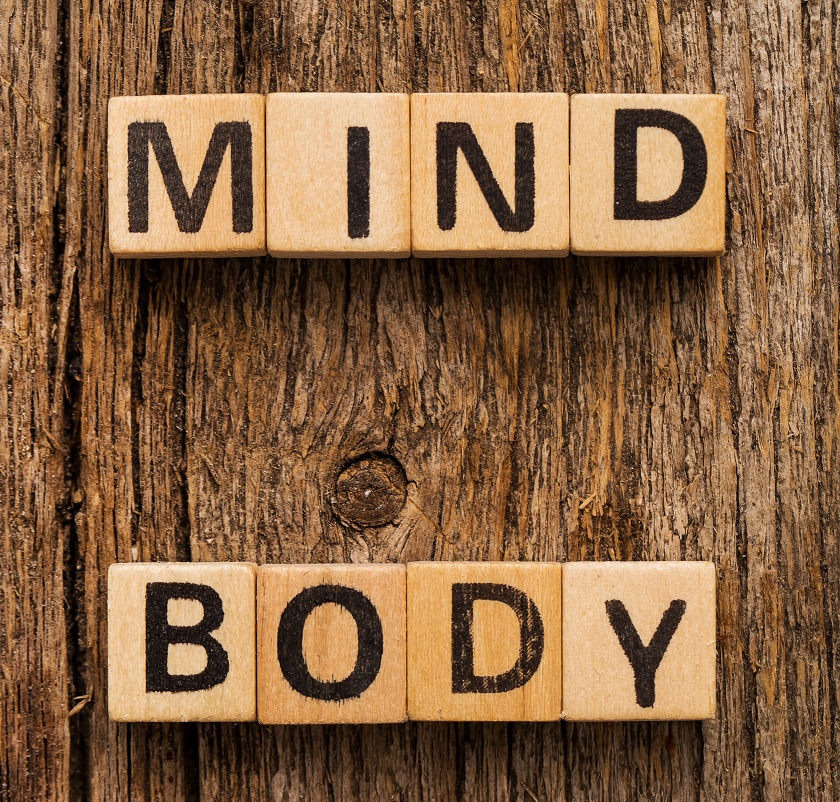Sound Bath Meditation:
Stress is an omnipresent element in our daily lives, and it often accumulates as the week progresses, occasionally overpowering us. It’s essential, however, to allocate a portion of our time for self-care to rejuvenate both our minds and bodies. One effective avenue for achieving this equilibrium is through mind-body practices, with sound bath meditation standing out as a powerful method.
By now, it’s widely recognized that stress doesn’t serve our health and overall well-being. Thus, dedicating time to unwind has become not just a luxury but a necessity.
In reality, there are numerous ways to promote relaxation and harmony for the mind and body. Personally, there are few methods as effective as meditation for simultaneously achieving both goals while fostering a profound connection with ourselves.
In this discussion, we’ll delve into the specifics of sound bath meditation, a practice that holds immense potential for inner healing and tranquility.
Meditation in general can be great for overall stress levels. However, when you add peaceful and healing ambient sounds to your meditation, you may further benefit from your practice.

What Is Sound Bath Meditation?
In the realm of meditation, sound bath meditation emerges as a contemporary adaptation, intertwining the ancient art of using sound for spiritual and healing purposes with modern practices. This unique form of meditation is gaining popularity for its ability to create an immersive, soothing experience, leveraging the power of sound to enhance mental and physical well-being.
The Roots of Sound in Meditation
For thousands of years, various cultures have recognized and utilized the power of sound in meditation. The rich history of this practice includes the use of music, Tibetan bells, and other instruments, each contributing to the meditative experience in its way. These sounds have been pivotal in traditional meditation practices, serving as tools to facilitate deeper spiritual exploration and inner calm.
The Essence of Sound Bath Meditation
Sound bath meditation, while a newer practice, builds on this historical foundation. It involves creating a calming atmosphere filled with healing tones, achieved through the use of live instruments and a variety of objects that produce ambient noise. The goal is to envelop the practitioner in a cocoon of sound, facilitating a deeper state of meditation. This immersive experience not only promotes relaxation and stress relief but is also believed to have healing properties for the mind and body.
A Diverse Spectrum of Sounds
What makes sound bath meditation particularly fascinating is its diversity. Different cultures bring their unique approaches and sounds to the practice, each adding a distinct flavor to the meditative experience. This variety allows practitioners to explore and connect with a range of soundscapes, from the resonating tones of a gong to the gentle hum of a singing bowl.
Sound Bath vs. Traditional Meditation
While traditional meditation often focuses on silence or guided visualization, sound bath meditation places emphasis on the auditory experience. This approach can be particularly beneficial for those who find silence challenging or who seek a more tangible focus during their meditation.
In essence, sound bath meditation offers a refreshing, sensory-rich alternative to traditional meditation methods. It’s a testament to the ever-evolving nature of meditative practices, continuously adapting and integrating new elements to enhance the experience of mindfulness and relaxation. Whether you’re a seasoned meditator or new to the practice, sound bath meditation provides a unique avenue to explore the profound impact of sound on our mental and emotional well-being.

Sound Bath Meditation: A Symphony of Healing and Relaxation
In the increasingly popular world of sound bath meditation, practitioners often find themselves in a class setting, immersed in a sea of harmonious sounds. This unique form of meditation, guided by an experienced instructor, uses an array of instruments like gongs, crystal bowls, cymbals, and even the human voice to create an environment that is both soothing and healing.
The Class Experience
A typical sound bath meditation class involves a blend of these instruments, each contributing to the ‘bath’ of sounds. The instructor carefully selects and plays these instruments, creating vibrations that are believed to have healing properties. The duration of these sessions can vary, generally lasting from a quick, refreshing 15-minute escape to a more prolonged, hour-long retreat. This variability ensures that individuals can find a session that fits into their schedules and meets their meditation needs.
Group vs. Individual Sessions
While many enjoy the collective energy of group sessions, there is also the option for more individualized experiences. Some practitioners prefer private sessions where the sound bath is tailored to their personal needs, providing a more focused and intimate experience.
Accessibility and Home Practices
One of the most appealing aspects of sound bath meditation is its accessibility. For those unable to attend live classes, online alternatives offer a convenient solution. Through digital classes or videos, the essence of a sound bath meditation can be experienced virtually anywhere. Furthermore, enthusiasts can even create their own sound bath setup at home. Purchasing instruments like Tibetan bowls or gongs allows for personal, self-guided meditation sessions, bringing the experience right into the comfort of one’s living space.
Exploring the Relaxing Powers of Sound Bath Meditation
Finding true relaxation during meditation can sometimes be a challenge. Whether it’s persistent thoughts about the day’s stresses or the future, or the discomfort of traditional meditation poses, these factors can hinder the journey into a relaxed state. This is where sound bath meditation shines as a uniquely effective practice.
Ease of Positioning
One of the key advantages of sound bath meditation is its simplicity in terms of positioning. Unlike some meditation practices that require specific poses, sound bath meditation typically involves just lying on your back. This ease of positioning can make it more accessible and comfortable, especially for beginners or those with physical limitations.
The Role of Sound in Relaxation
The core of sound bath meditation lies in its use of soothing, ambient sounds to create a tranquil atmosphere. These sounds are carefully curated to help you shed stress and slip into a deeper state of meditation. Unlike the rhythmic beats found in much of today’s popular music, the sounds in a sound bath are designed to be non-rhythmic, allowing your mind to fully relax without the distraction of a predictable beat.
By surrounding yourself with these peaceful sounds, you can more easily clear distractions and negative thoughts, fostering a space where your energy fields can be cleansed of stress and tension.
A Complementary Practice to Traditional Meditation
For those accustomed to meditating in silence, sound bath meditation offers an interesting variation. It provides a different pathway to relaxation, one that might be more effective for certain individuals. The gentle, enveloping nature of the sounds can serve as a helpful tool in achieving a state of deep relaxation and mental clarity, complementing traditional meditation practices.
While the sounds used in sound bath meditation differ significantly from conventional music, the benefits of music, in general, are widely recognized for both mental and physical health. Numerous studies have demonstrated that music can effectively reduce pain and stress levels. Additionally, it has been known to provide relief and comfort, easing anxiety and pain, particularly during challenging experiences like chemotherapy or hospital stays. This underscores the therapeutic potential of sound, whether in the form of traditional music or the unique auditory landscape of sound bath meditation.
You Can Focus More During Your Meditation
In addition to helping you achieve different states or levels of relaxation, sound bath meditation may enable you to focus more effectively. Certain sounds are great for concentrating your mind on the present moment. In addition, thought to remove negative energy from the practitioner.
The goal is not to wander aimlessly through your thoughts. Unfortunately, this can happen with a more “silent approach” within the practice. The healing tones of sound bath meditation may help ward off distracting thoughts and ideas.

Meditation does not come easy for all of us. There is no shame in this. Oftentimes, this is why tools are used. Adding a gong, bells, or different types of music, can do wonders for the mind, keeping you on task during your session(s).
Sound Adds A New Dimension to Meditation
In truth, there is no perfect way to meditate. Everyone is different. Furthermore, practitioners of meditation may try different types, to find one or more that help heal there mind and body the best. Sound is one of the most effective ways you can go about changing the way you meditate.
There are even studies showing that music or music therapy activate the limbic and paralimbic structures, that function abnormally in patients with high depressive components. Point being, sound or music can effect all of us differently, and for different reasons.
“Gong” sound bath meditation, in particular, is known to enhance meditation. Gongs can create a wide range of frequencies that are great for meditating. These sound instruments date back to as early as 16,000 BC and are believed to offer benefits of relaxation, pain relief and better release of emotions.
Tibetan bells and sound bowls are effective as well. If you’re looking to switch up your practice, gongs are a great place to start for sound bath meditation. Truly, it adds a whole new dimension.
Longer and Deeper Sessions

Sound bath meditation sessions usually eclipse about 30 minutes of time. However, some practices go for much more sustained time, 45 minutes – 2 hours.
With the use of harmonics of sound bath tools, your physical and mental state can truly be transformed and heightened, as the sound (in gong baths) are said to “travel to the core of the cellular system“.
You may even add sound into your sessions at specific intervals. Maybe you’re someone who prefers to segment your meditation sessions, using different types of meditation, and tools throughout your practice.
This feeling may allow for less distraction and more spiritual healing and resonance based on the individual.
Heal Your Body and Mind
Sound bath meditation allows you to do more than get in touch with your mind and body. In fact, this type of meditation may help promote physical and mental healing within the self. Meditation, in general, is known for its healing properties, as well is sound therapy. When you combine the two, the potential for healing, may even be heightened.
Music even effects parts of the body which control heart rate, respirations and digestion. Furthermore, It can help improve breathing, oxygenation, decrease stress hormones, aiding in immune function.

Conditions like anxiety and depression can benefit from sound bath meditation. Sound, coupled with meditation, can have a significant impact on mood and energy levels. Sound alone, is said to improve cognitive and behavioral stimulation, even in older adults with comorbid physical and mental disorders.
Meditation is known for many benefits both physiologically and mentally. For example, pain, blood pressure, irritable bowel syndrome, as well as anxiety, depression and insomnia.
Sound bath meditation builds on the already potent healing properties of conventional meditation. As your body relaxes with surrounding sounds, your blood pressure may lower, your mind stops racing. In addition, you can take the time to fully restore your senses, physical self, and the connection with your inner-self.
Final Thoughts!
Don’t just take our word for it, give sound bath meditation a try. Different practitioners may prefer different types and frequencies of meditation.
Be committed. Equally important, take this and other forms of relaxation techniques, or breathing exercises seriously. Allow them time to aid in helping to heal or repair your mind and body.
Never use these therapies or practices alone if you’re currently being treated for a physical or mental disorder. Always consult with a medical professional and determine what the right interventions are for you, as an individual.
References:
- https://www.allure.com/story/sound-bath-meditation-benefits
- https://becrystalclear.com/5-benefits-of-sound-baths/
- https://www.allure.com/story/sound-bath-meditation-benefits
- https://www.health.harvard.edu/mind-and-mood/how-music-can-help-you-heal
- https://www.apa.org/monitor/2013/11/music#:~:text=A%20wealth%20of%20new%20studies,system%20function%20and%20reduces%20stress.
- https://www.ncbi.nlm.nih.gov/pmc/articles/PMC4369551/
- https://www.healthline.com/health/gong-bath#what-are-they
- https://www.uclahealth.org/vitalsigns/the-sound-of-healing
- https://www.nccih.nih.gov/health/meditation-in-depth



